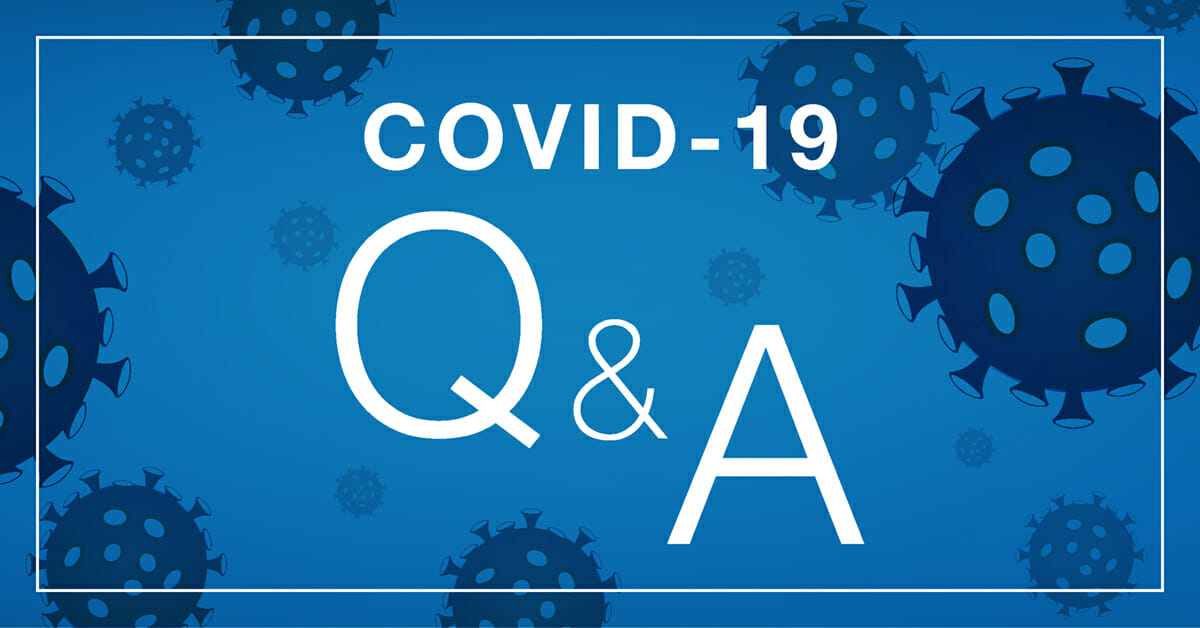How is COVID-19 Impacting Donation?
Like many other organizations, LifeSource is experiencing a variety of challenges due to the pandemic, but we still continue our work to save and heal lives through organ, eye and tissue donation.

During this COVID-19 pandemic, the LifeSource team continues fulfilling our mission to save and heal lives through organ, eye and tissue donation. We are, like many other organizations, experiencing a variety of challenges.
Here are some questions and answers about the impact of COVID-19 on the donation and transplantation community:
1. Is LifeSource still fulfilling donation wishes during the pandemic?
Yes. A COVID-19 Command Task Force – led by Julie Kemink, Chief Clinical Officer – monitors the changing environment and adjusts our practices and guidelines to continue delivering life-saving organs to patients waiting. LifeSource team members and recovery surgeons continue to be deemed “essential personnel” in hospital facilities and are complying with all requirements while caring for a donor.
2. Are donors being tested for COVID-19?
Yes. LifeSource screens all organ, eye and tissue donors for risk factors utilizing Centers for Disease Control (CDC) criteria. LifeSource tests all potential organ donors. LifeSource is testing all donors utilizing Food and Drug Administration (FDA) approved testing platforms. Results of screening and testing are shared with transplant centers, tissue processors, and eye processors so they may make an informed decision regarding accepting organs, eyes & tissues for their recipients.
3. Can an individual who tested positive for COVID-19 be a donor?
Hospitals should continue to refer all patients who meet donation referral trigger criteria so LifeSource can conduct evaluation. Until recently, an individual who tested positive with active COVID-19 would not be able to donate. However, transplant centers have started accepting some COVID-positive donor organs in cases where the individual has no active symptoms. Like cancer diagnoses, organ donation opportunities may still exist with the presence of a COVID positive nasopharyngeal test and negative bronchial lavage test.
4. How has COVID-19 impacted the donation process?
The donation process has been described as symphony; it takes many people working in concert to make the complex process happen. We are in close communication with our hospital partners, transplant centers, tissue partners, government officials, transportation partners and suppliers regarding needed process adjustments.
Learn more about the donation process.
5. Could the number of donors decrease during this pandemic?
We did see an initial decrease in the total number of potential donors, especially during the stay at home orders. There are many possible reasons for this including the fact that people are spending less time doing activities outside the home such as working, driving/spending time in vehicles. Since the stay at home orders lifted, we have seen donation activity slowly return to more normal levels.
Eye donation also significantly decreased while elective surgeries were on hold, however recipient needs are being met with the current supply of donor corneas.
6. Has living donation been impacted?
LifeSource leads the coordination of deceased donation while our regional transplant center partners lead in living donation, so we ask that interested parties please contact our transplant center partners for more information on living donation.
7. Are transplant recipients high-risk for COVID-19?
The American Society of Transplantation has published a Transplant Community FAQ resource providing detailed information for transplant recipients regarding COVID-19. As more information becomes available, the document will continue to be updated. Regional transplant centers can also be used as a resource for recipients that have questions in our region.
8. How can I support donation during this time?
[UPDATE] Since January 2020, 300 people in the United States have died waiting for a life-saving transplant and more than 110,000 continue to wait. Our work is now more important than ever. You can make a difference by registering as a donor and encouraging others to do the same:
- Register to be a donor;
- Contribute; and
- Follow us on social media for more info and real-time updates: Facebook, Instagram, Twitter and LinkedIn.
We’ll continue to communicate any developments or new resources that become available. Sign-up for emails to receive future updates.
Related posts: Coronavirus (COVID-19) Update from LifeSource, March 17
 Skip to main content
Skip to main content
